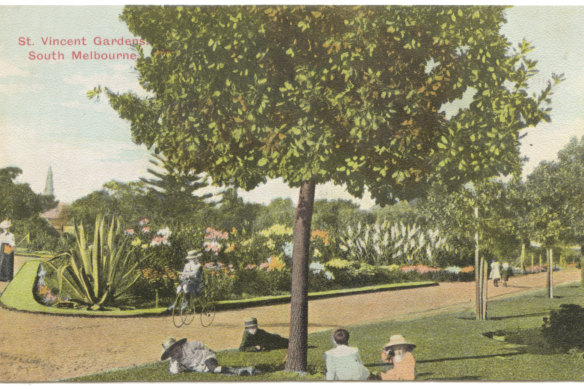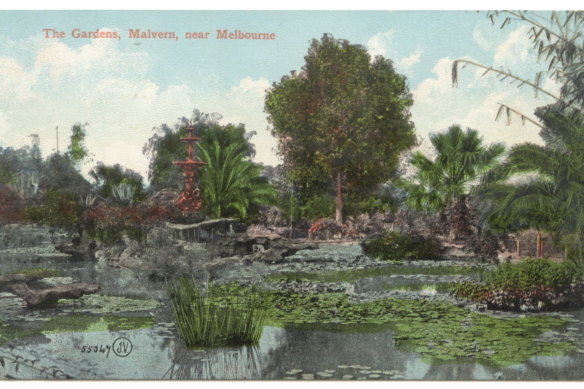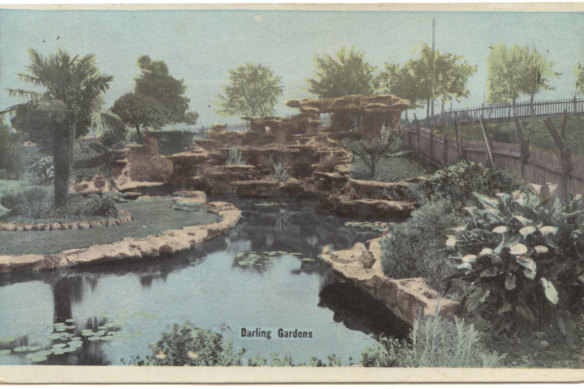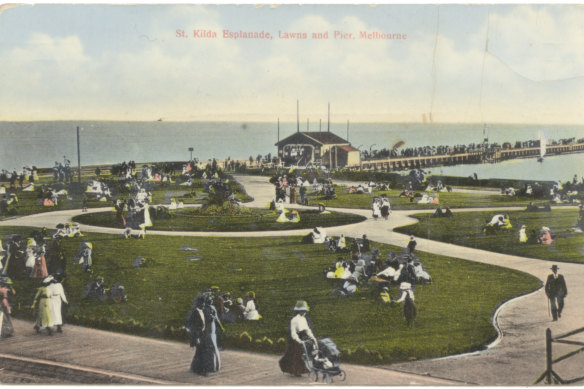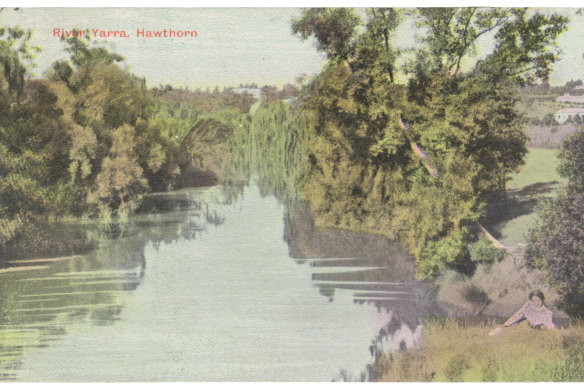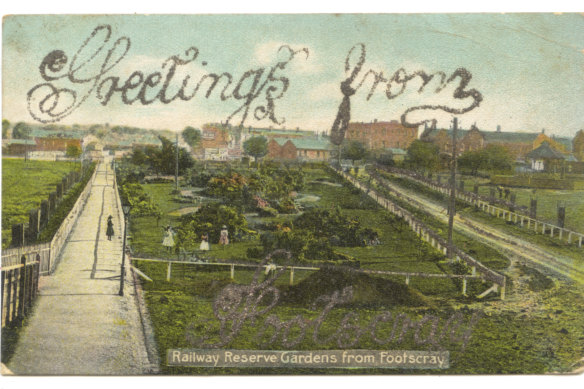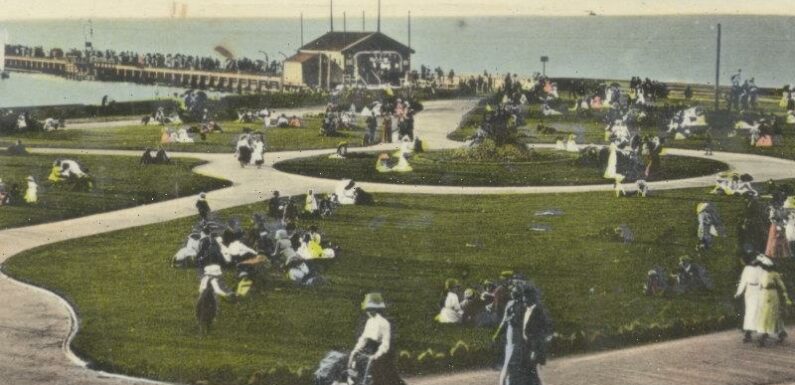
To the casual observer, old postcards of gardens might not seem immediately covetable. Inexpensive and mass-produced, they were designed to be dashed off without delay and dispatched without an envelope. It was never intended they should last forever.
But as it’s turned out some have lasted quite some time. Indeed many have a relevance that just keeps growing because, despite being so diminutive in size, postcards have a lot to tell. They provide a window into how we lived and gardened – not to mention communicated – more than a century ago.
Old postcards provide a window into how we lived and gardened a century ago.Credit:Ken Duxbury Collection
They show vistas across lawns and views down pathways. They home in on intricate parterres and flamboyant summer bedding. They illustrate rockeries and ferneries, fountains and rotundas, hedges and shrubberies, and all the other horticultural features that filled our public landscapes back when sending a postcard was as unremarkable as sending a text.
Thanks to all their pictorial revelations, postcards, which hit peak popularity from around 1900 to 1914, have wound their way into gardening exhibitions, talks, tours and history books. And now another particularly vast private collection has come to light.
When Ken Duxbury, a town planner and landscape architect with a lifelong interest in gardens and a serious bug for collecting, died at the age of 68 in March this year, among his possessions were more than 500 garden-related postcards.
The postcards chart our changing tastes in plants and garden design.Credit:Ken Duxbury Collection
Garden historian Helen Page says it is an “amazing and important collection” that sheds new light on the history of horticulture. While Duxbury had also amassed tubs of nursery catalogues, hundreds of gardening magazines, up to 1500 recipe books and booklets, more than 1000 works of Australian pulp fiction, and 1500-odd non-gardening-related postcards, Page considers the gardening postcards “the best bit”.
A rockery in the Darling Gardens in Clifton Hill, demolished about 70 years ago.Credit:Ken Duxbury Collection
Page and Duxbury bonded in the early 1990s over their shared interest in garden history and, while she had visited his place a couple of times over the years and knew he was a committed collector, she says she had “no idea” about the full extent of his postcard acquiring.
She says Duxbury had purchased – from rare book sales, ephemera auctions, op shops and other such haunts – postcards of gardens everywhere from Camberwell to Camperdown. Some date back more than 120 years and many show plants and horticultural features long since removed.
The postcards are part of social history. This one also still has the price it is thought Duxbury paid for it.Credit:Ken Duxbury Collection
One postcard, for instance, depicts the wondrously rustic 1890s rockery crafted – by master grotto maker Charles Robinette – in the Darling Gardens in Clifton Hill, a focal feature that has now been gone about 70 years.
Duxbury had cards celebrating gardens at Brighton beach back when they were filled with elaborate topiary and of the railway reserve in Footscray when it was brimming with high-maintenance garden beds. He had postcards of gardens all over Melbourne with their original plantings.
Picnicking in St Kilda in about 1912.Credit:Ken Duxbury Collection
Page says these postcards not only chart our changing tastes in plants and garden design but also, our shifting priorities as to how much space and labour is devoted to public greenery. “I just think they tell us so much about how significant gardens were back then,” she says. “To think of the number of gardeners that must have been employed to keep these gardens going, people must have really appreciated them.”
Page wants the public to appreciate Duxbury’s efforts too. She has been liaising with Duxbury’s family about the future of his gardening postcards and says that some, including those depicting botanic gardens, are being offered to the Royal Botanic Gardens Victoria and the rest to the State Library of Victoria.
The Yarra was also featured on postcards.Credit:Ken Duxbury Collection
Page says Duxbury was a “quiet activist” who used postcards to make a difference. They illustrated the numerous articles he wrote on various aspects of gardening and landscape design and were also included in his 1999 heritage report on a star-shaped garden bed established in the Alexandra Gardens in 1904. Page says this “fastidiously researched” document guided the bed’s recent restoration.
The Railway Reserve in Footscray in about 1907.Credit:Ken Duxbury Collection
She says Duxbury also freely shared his postcards with people interested in, or working on, particular parks and gardens around Melbourne. His numerous early 1900s postcards of the Williamstown Botanic Gardens, for example, helped shape how that landscape is managed today.
Page says Duxbury was “a great researcher and collector who needs to be acknowledged”. She is working on that.
Make the most of your health, relationships, fitness and nutrition with our Live Well newsletter. Get it in your inbox every Monday.
Most Viewed in Lifestyle
From our partners
Source: Read Full Article
